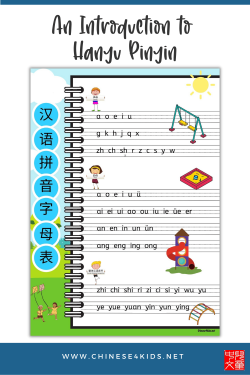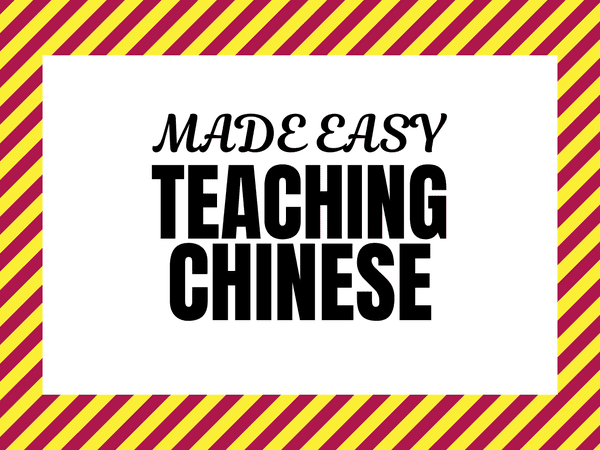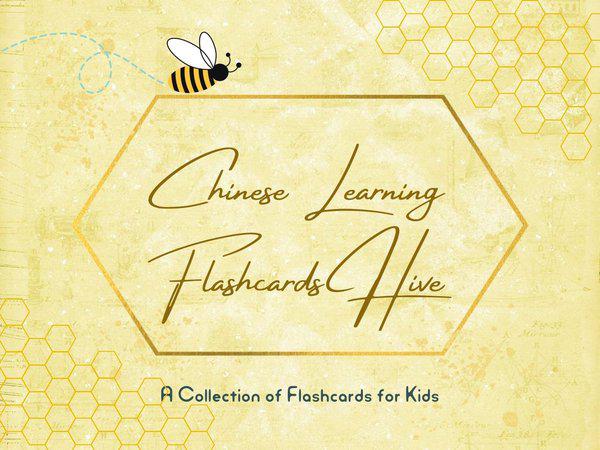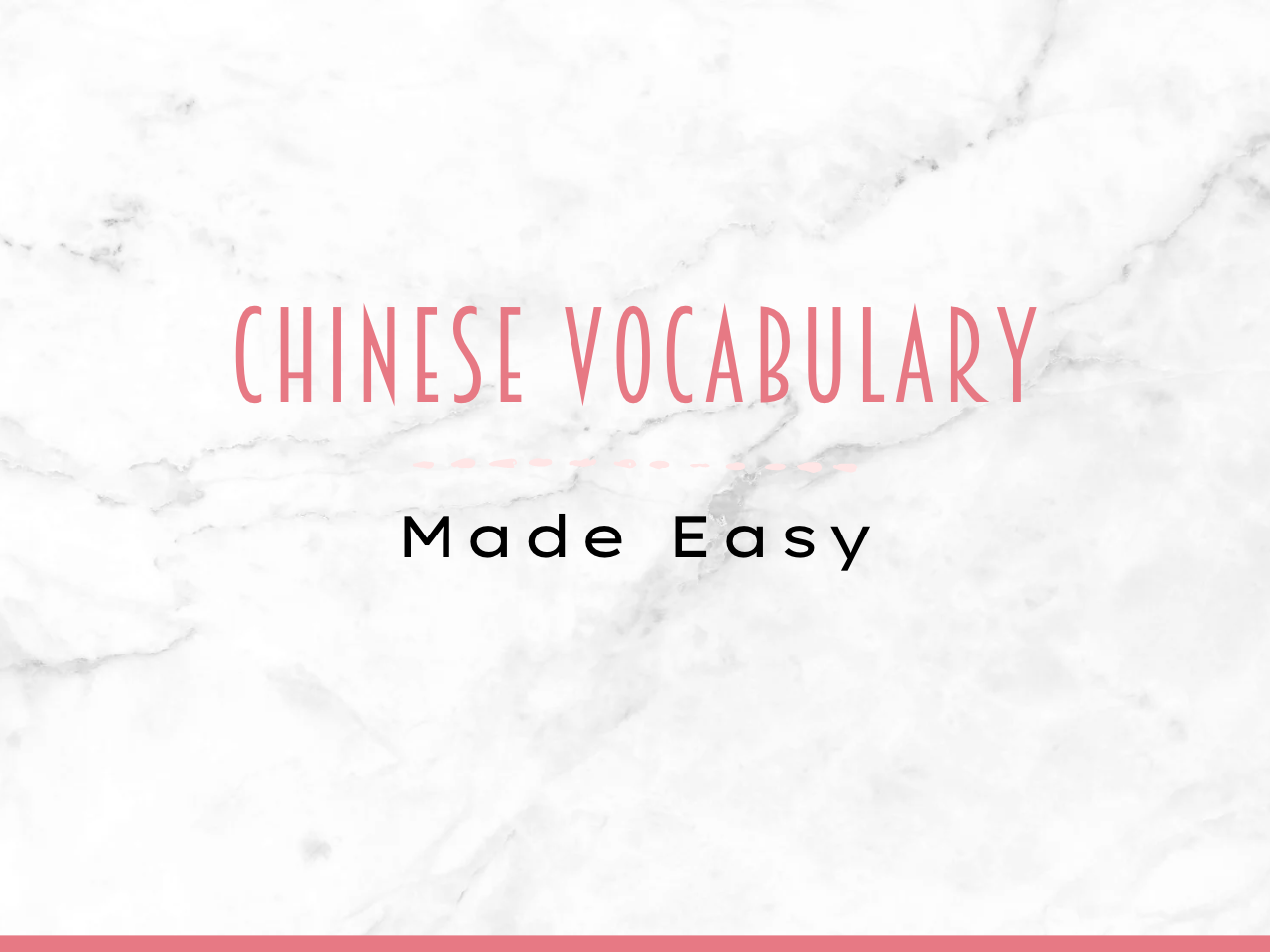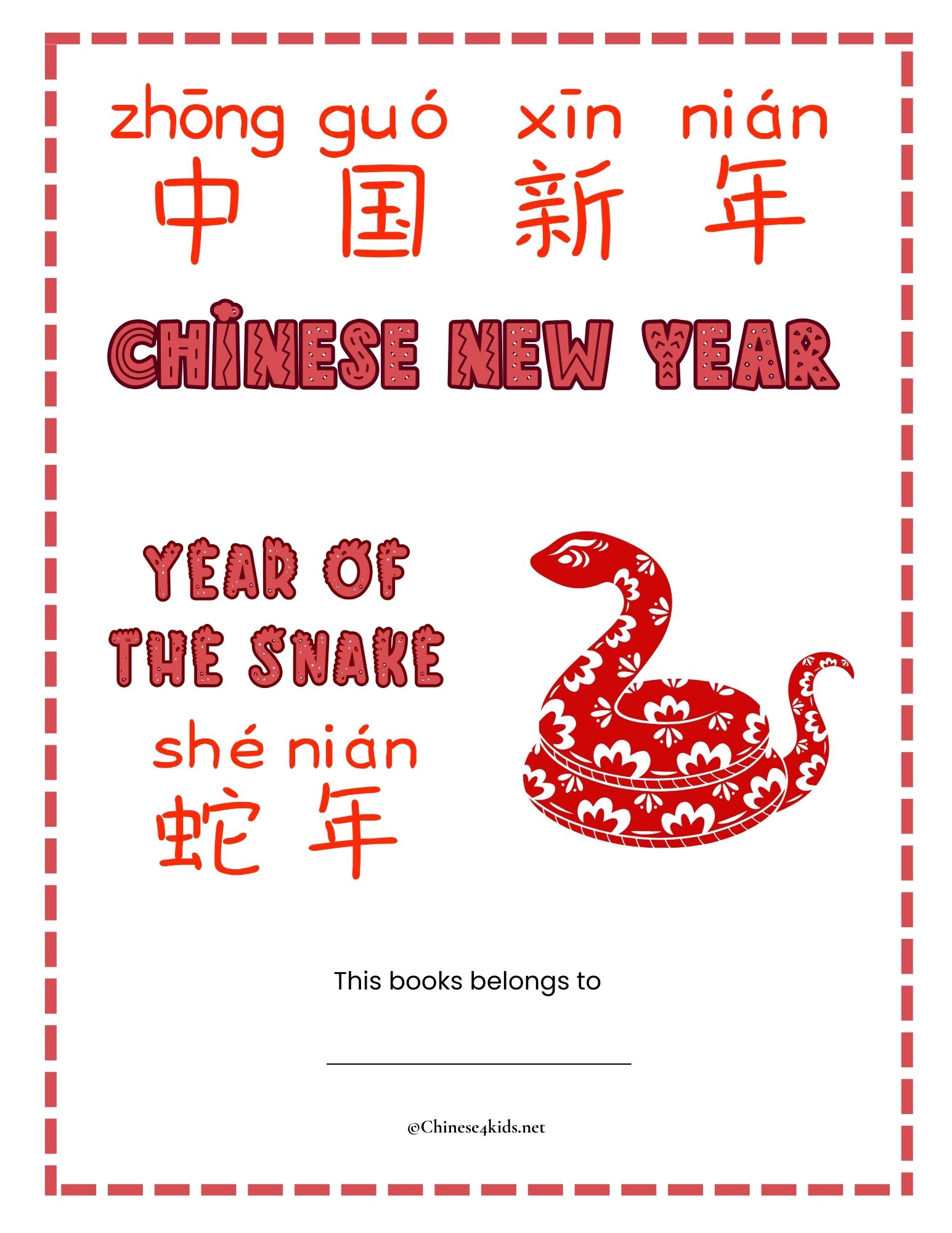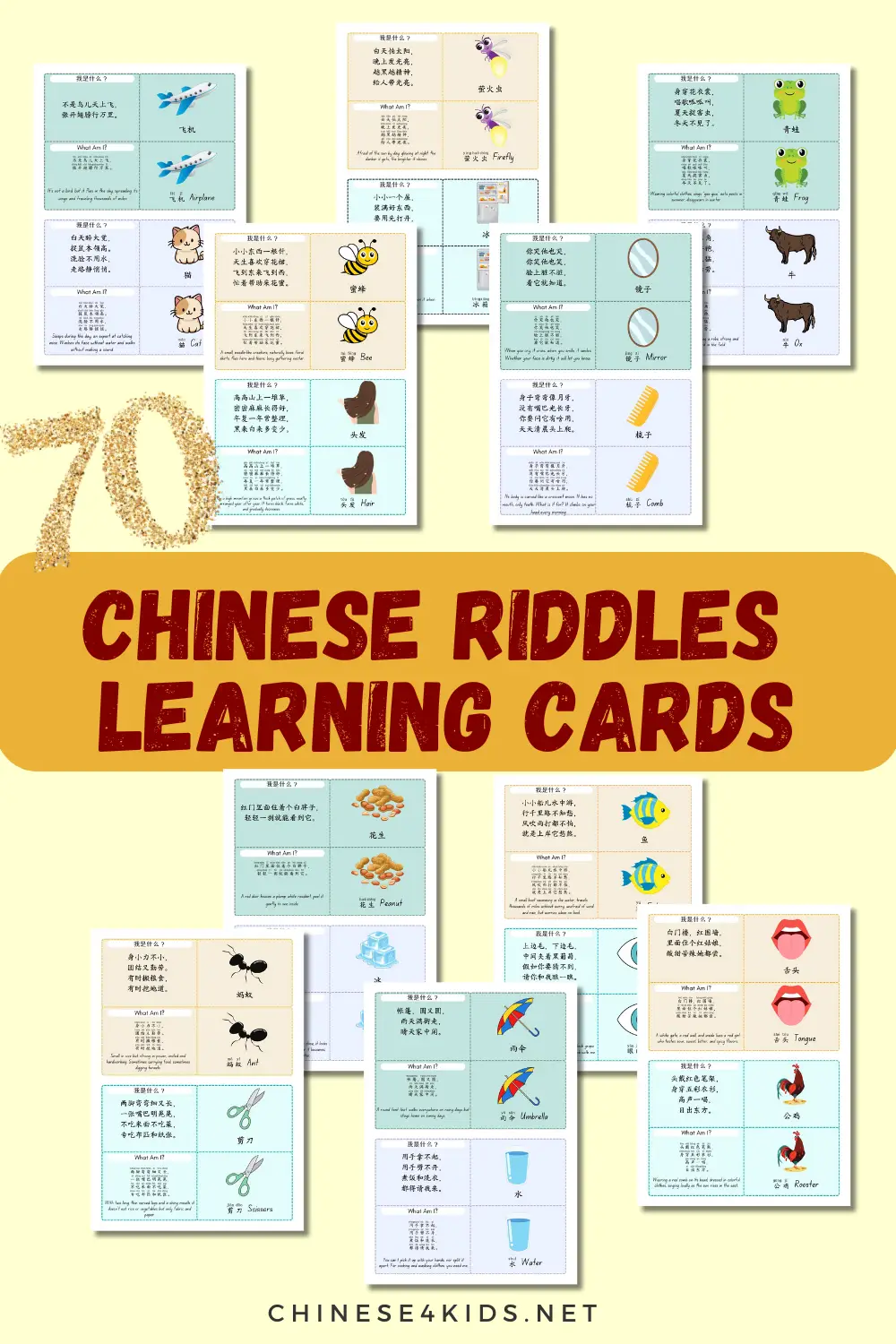
Home » Mandarin Chinese teaching resources » An Introduction to Hanyu Pinyin
An Introduction to Hanyu Pinyin
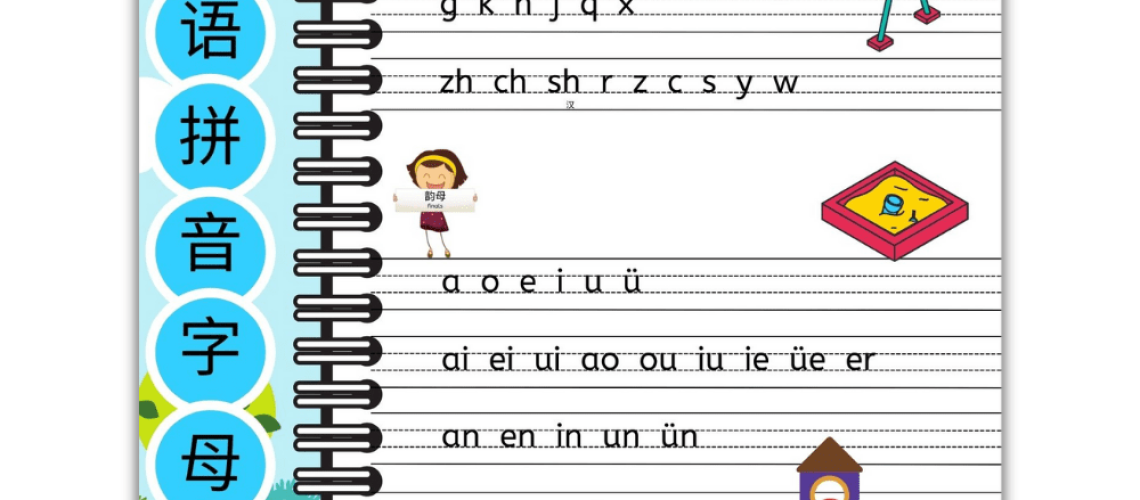
Hanyu Pinyin (汉语拼音), also called Chinese Phonetic Alphabet, is the official romanization system for standard mandarin Chinese. It is often used to teach Mandarin Chinese which is written using Chinese characters. The Pinyin system is used to help pronounce the characters as well as to input Chinese characters with a computer.
What Does Hanyu Pinyin Stand for?
Hanyu (汉语) means “the spoken language of the Han people”.
Pinyin (拼音) literally means “spelled sounds”.
The pinyin system was developed in the 1950s. It was published by the Chinese government in 1958 and adopted as an international standard by the International Organization for Standardization (ISO) in 1982.
Initials and Finals

Nearly every Mandarin syllable can be spelled with exactly one initial followed by one final. Initial in Chinese is called 声母shēngmǔ; finals are called 韵母yùnmǔ. Both initials (声母) and finals (韵母) are a cluster of letters that form the fundamental elements in pinyin.
Most initials contain a consonant. However, finals are not always simple vowels. In compound finals (复韵母fùyùnmǔ), two vowels are put together, for example, ao, ou, etc.
生母 Initials
There are 23 initials in pinyin, detailed as below. Always staying before finals, Initials and finals together make syllables.
b、p、m、f、d、t、n、l、g、k、h、j、q、x、zh、ch、sh、r、z、c、s、y、w
韵母 Finals
There are 24 finals in pinyin. There are 3 types of finals: single finals, compound finals, and nasal finals. Nasal finals can be categorized into two groups: front nasal finals and back nasal finals.
In detail,
单韵母 (single finals): a, o, e, i, u, ü
复韵母 (compound finals): ai, ei, ui, ao, ou, iu, ie, üe, er
前鼻韵母 (front nasal finals): an en in un ün
后鼻韵母 (back nasal finals):ang eng ing ong
整体认读音节 Overall Syllable Recognition
In general, overall syllable recognition refers to syllables being pronounced as the initial even with an additional final or being pronounced as the final even with an additional initial.
zhi、chi、shi、ri、zi、ci、si、yi、wu、yu、ye、yue、yuan、yin、yun、ying
Please note that yuan is a special case: just pronounce it as a whole rather than spelling it.
General Rules
Here are some tips to remember the pinyin rules.
- “a” can not form syllables with “j, q, x” by itself; an “i” needs to be added in between. For example, jia, qia, xia.
- “o” can not form syllables with “g, k, h” by itself; an “u” needs to be added in between. For example, guo, kuo, huo.
- To make overall syllables with :zh, chi, sh, r, z, c, s”, we simply add an “i” at the end.
- When used alone, “iou” needs to be changed into “you”; “uei” and “uen” need to be changed into “wei” and “wen”.
- If “i” is the beginning of a syllable, add “y” in front of it. For example, yin, yin, ying.
- When “u” is alone, add “w” in the front. For example, wu.
- When “ü” goes with y, remove the dots, eg. yu.
- “ü” does not need to change when it goes with “n” or “l”. When it goes with “j, q, x”, the two dots need to be removed. For example, ju, qu, xu.
Now, do you have a good understanding of Hanyu pinyin?
Hanyu Pinyin Learning Resources
Just like letter writing, pinyin handwriting also requires practice. A good Hanyu pinyin handwriting workbook will be fantastic to have for anyone who is learning Pinyin. The workbook below is available on Amazon and can be a great companion for you.
If you like this post, Pin It!
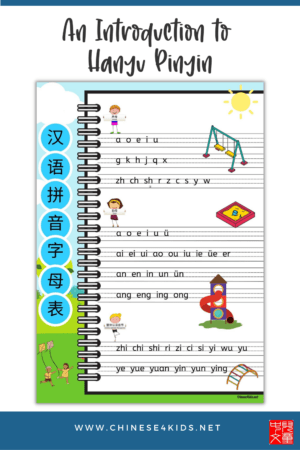
Resources Mentioned Above:
You May Also Be Interested:
- Chinese4kids Membership – a portal for busy Chinese teachers and parents
- Chinese learning flashcards Hive – a flashcards library that with regular additions of new quality Chinese learning flashcards
- Chinese learning worksheets collection – Also a part of Chinese4kids membership, this collection is for teachers and parents who want to have access to engaging worksheets and activity sheets created for kids learning Mandarin Chinese as an additional language
- Speak Chinese with Kids Course
You May Also Be Interested:
- Chinese4kids Membership – a portal for busy Chinese teachers and parents
- Chinese learning flashcards Hive – a flashcards library that with regular additions of new quality Chinese learning flashcards
- Chinese learning worksheets collection – Also a part of Chinese4kids membership, this collection is for teachers and parents who want to have access to engaging worksheets and activity sheets created for kids learning Mandarin Chinese as an additional language
- Speak Chinese with Kids Course
- Chinese Vocabulary Made Easy Course
Recent Posts
Join Our Membership
Enroll to A Course
Buy An eBOOK
Our Posts
